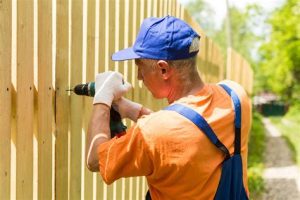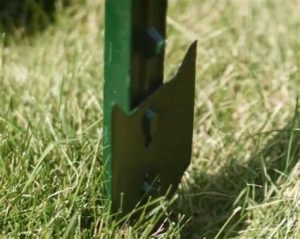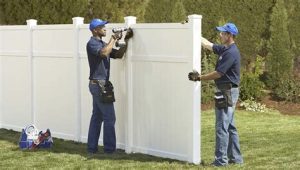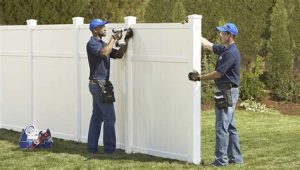Explore essential guidelines on local zoning laws, property line regulations, fence materials, building permits, and restrictions for your fencing projects.Are you considering installing your own fence to enhance your property’s privacy and curb appeal? While the prospect of a DIY fencing project can be exciting and cost-effective, it’s essential to navigate the regulations and guidelines that come with it. Before you start digging post holes, you’ll need to familiarize yourself with your local zoning laws, property line regulations, and the necessary permits. Additionally, choosing the right materials and adhering to height and location restrictions are crucial to ensure your fence not only meets aesthetic and functional needs but also complies with legal requirements. In this blog post, we’ll guide you through the essential steps to ensure your fencing project runs smoothly and within the bounds of the law. Let’s dive into the regulations you need to know before embarking on this rewarding home improvement endeavor!
Understanding local zoning laws
When considering a home improvement project such as installing a fence, it’s crucial to have a solid understanding of local zoning laws. These laws can dictate a range of factors, including where you can place a fence, how tall it can be, and whether you need any special permits. Violating these regulations could lead to fines or the need to remove your newly installed fence, so being informed is key.
Local zoning laws vary widely by location, so it’s essential to consult your local zoning office or municipal website for specific regulations that apply to your area. Many communities have specific fencing requirements, including restrictions on materials, styles, and heights, depending on the zoning classification of your property.
Additionally, if your property is located in a neighborhood or community with a Homeowners Association (HOA), those guidelines may further restrict your fencing options. Always check both the local zoning laws and your HOA rules to ensure that your fence meets all necessary requirements.
Researching property line regulations
When considering installing your own fence, one of the most crucial steps is understanding property line regulations. It’s important to know where your property ends and your neighbor’s begins. Not only is this essential for maintaining good neighborly relations, but it also helps you avoid potential legal disputes.
To start, you should obtain a copy of your property’s plat map or survey. A plat map provides detailed information about your land boundaries, including any easements. If you don’t have this document, you can often acquire it from your local zoning office or city hall. Additionally, you may want to consult with a licensed surveyor if you’re uncertain about interpreting the map.
Furthermore, many municipalities have zoning laws that dictate how close you can build a fence to your property line. It’s advisable to research these regulations before commencing any construction. Some areas may require you to place your fence a specific distance from the property line or may have specific rules regarding the height and style of fences. Failing to comply with these regulations can result in hefty fines or removal of your fence, so doing your due diligence is key.
Choosing appropriate fence materials
When deciding to install a fence, one of the most important factors to consider is the choice of fence materials. The right materials not only contribute to the aesthetic appeal of your property but also determine the durability, maintenance requirements, and cost of the fence.
| Material | Advantages | Disadvantages |
|---|---|---|
| Wood | Natural appearance, versatile designs | Requires regular maintenance, can rot |
| Vinyl | Low maintenance, available in various colors | Higher initial cost, may crack in extreme temperatures |
| Chain Link | Cost-effective, durable | Limited privacy, less aesthetic appeal |
| Aluminum | Elegant design, rust-resistant | Less sturdy than other materials, can be expensive |
| Composite | Eco-friendly, low maintenance | Expense, limited color options |
Choosing appropriate fence materials also involves understanding local regulations; certain neighborhoods might have restrictions on what materials can be used. For example, if you live in a community with a homeowners’ association (HOA), it’s crucial to verify their guidelines before making a purchase.
Another factor to consider is your budget. While some materials might have a lower upfront cost, they could require more maintenance or replacement over time, which can add to the overall expense. Always weigh the long-term costs against the initial investment when making your decision.
Finally, think about the purpose of your fence. Are you looking for enhanced privacy, simply marking property lines, or perhaps the need for security? Each function may lend itself better to specific materials. Prioritizing your needs will help guide you to the best choice for your situation.
Securing necessary building permits
Before embarking on your exciting journey of installing a fence, securing necessary building permits is a vital step that cannot be overlooked. Local regulations vary widely, and without the proper permits, your project could run into legal issues that might result in costly fines or even the need to remove the fence entirely.
Typically, the process of obtaining a permit starts by reaching out to your local planning or zoning department. They will provide you with the specific requirements and guidelines that you must adhere to. It’s essential to prepare any necessary documentation, which may include a site plan that illustrates the intended location of your fence and its proximity to existing structures.
In some areas, you might find that a simple fence installation requires a permit, while in others, it may only be needed for taller designs or those with certain features, such as electric or privacy fences. Always remember to check the local zoning laws to ensure compliance and to avoid any unexpected issues later on in your project.
Following height and location restrictions
When planning to install a fence, one of the crucial steps is to ensure compliance with height and location restrictions set forth by local zoning regulations. These rules are often in place to maintain aesthetic consistency within neighborhoods, enhance property value, and ensure safety for both residents and visitors.
Height restrictions typically dictate how tall a fence can be, which can vary depending on the type of fence and its location. For example, fences in front yards are often limited to a lower height compared to those in backyards. To navigate this effectively, it is essential to check your local regulations or consult with your zoning office.
| Fence Type | Front Yard Height Limit | Backyard Height Limit |
|---|---|---|
| Wood Fence | 4 feet | 6 feet |
| Chain Link Fence | 4 feet | 6 feet |
| Solid Privacy Fence | Not allowed | 8 feet |
Location restrictions often pertain to the placement of your fence in relation to property lines and other structures. For example, some areas require that fences be set back a certain distance from the property line. This not only helps avoid disputes with neighbors but also ensures that the fence does not obstruct visibility or access. Failing to comply with these restrictions can result in fines or the requirement to remove the fence. Always verify the specific rules in your community to avoid unexpected issues during your fencing project.
Frequently Asked Questions
What are the basic regulations for installing a fence on my property?
Basic regulations often include height restrictions, material specifications, and set-back distances from property lines. It’s essential to check with your local zoning office for detailed requirements.
Do I need a permit to install a fence?
In many areas, a permit is required before installing a fence, particularly if it exceeds a certain height or is made of specific materials. Always verify with your local authorities to ensure compliance.
What is the best way to determine my property lines before installing a fence?
The best way to determine your property lines is to consult your property deed or a survey map. Hiring a licensed surveyor can provide an accurate measurement and avoid potential disputes with neighbors.
Are there restrictions on the types of materials I can use for my fence?
Yes, there may be restrictions on materials based on local ordinances or homeowners’ association guidelines. Common materials include wood, vinyl, and metal, but check local regulations for specifics.
What should I do if my neighbor objects to my fence installation?
If your neighbor objects, it’s advisable to discuss their concerns directly and see if a compromise can be reached. Documentation of discussions may also be helpful, and you may need to consult local regulations to understand your rights.
Can I build a fence if my yard has utility lines?
You should always locate any underground utility lines before installing a fence. Contact your local utility company or use a service that marks utilities to avoid damaging lines and to ensure compliance with regulations.
What are some common mistakes to avoid when installing a fence?
Common mistakes include not checking local regulations, failing to locate property lines accurately, and neglecting to consider the maintenance of the materials used. Planning ahead can help avoid unnecessary issues.





